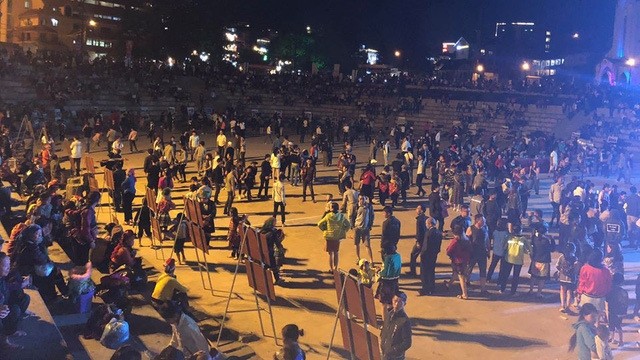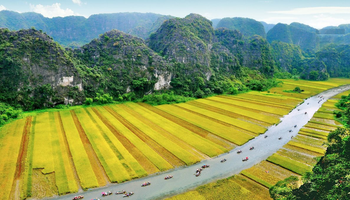Localities leading the country in terms of visitors were Ho Chi Minh City, Hanoi, Quang Ninh, Ba Ria – Vung Tau, Da Nang, Quang Nam and Khanh Hoa.
However, several essential figures have not been mentioned in the review reports, including the visitors' spending levels.
According to the Vietnam National Administration of Tourism, international visitors spent an average of US$1,143 for a 9.27-day trip to Vietnam in 2013 and over US$1,171 in 2017, an increase of only around 2.5%. In 2018, although the number of international visitors increased nearly 21% compared to the previous year, the total revenue from tourism rose around 14.6% (from VND541 trillion to VND620 trillion). The figure shows that the tourists still saved their money when travelling to the country.
The strong and rapid growth was a ‘common picture’ of Vietnamese tourism. However, while many localities with great potential for tourism attracted few visitors, several others were overloaded. The small space of Hoi An ancient city in Quang Nam province has had to serve 5-6 million tourists. Hanoi welcomed 26.04 million visitors in 2018, but they were often concentrated in the Old Quarter and the areas around Hoan Kiem Lake.
Since the Hanoi – Sapa highway and the cable system to Fansipan peak, Sapa town in Lao Cai has always been crowded and noisy. The overcrowding has generated many environmental consequences, increasing the risk of destroying heritages and decreasing the destinations’ attraction. The number of visitors from Europe and America, who have a high spending level, has declined in Sapa and Hoi An.
The development of tourism in terms of quantity and quality should be based on the actual situation of each destination. Localities that are facing overcrowding need to focus on improving the quality of services and setting strategies to study visitors’ demand, as well as developing tourism products to attract visitors with high spending. Meanwhile, it is crucial to pay greater attention to improving both the number of tourists and the quality of services at destinations with great potential. In addition, the attractiveness of services, entertainment activities and souvenir should be enhanced to encourage domestic and international visitors to increase spending.
In fact, the crowd development of tourism in many localities has reduced their attractiveness. For example, the reinforced concrete buildings make Sapa no longer a peaceful place, while the cultural identities of ethnic minority groups there are at risk of fading. Therefore, it is essential to consider the ‘quantity’ and ‘quality’ in tourism development. The target of welcoming 18 million international visitors in 2019 can be realised. However, if management agencies pay attention to only the ‘quantity’, it is difficult to develop tourism into a spearhead economic sector and its development is also unsustainable.
















